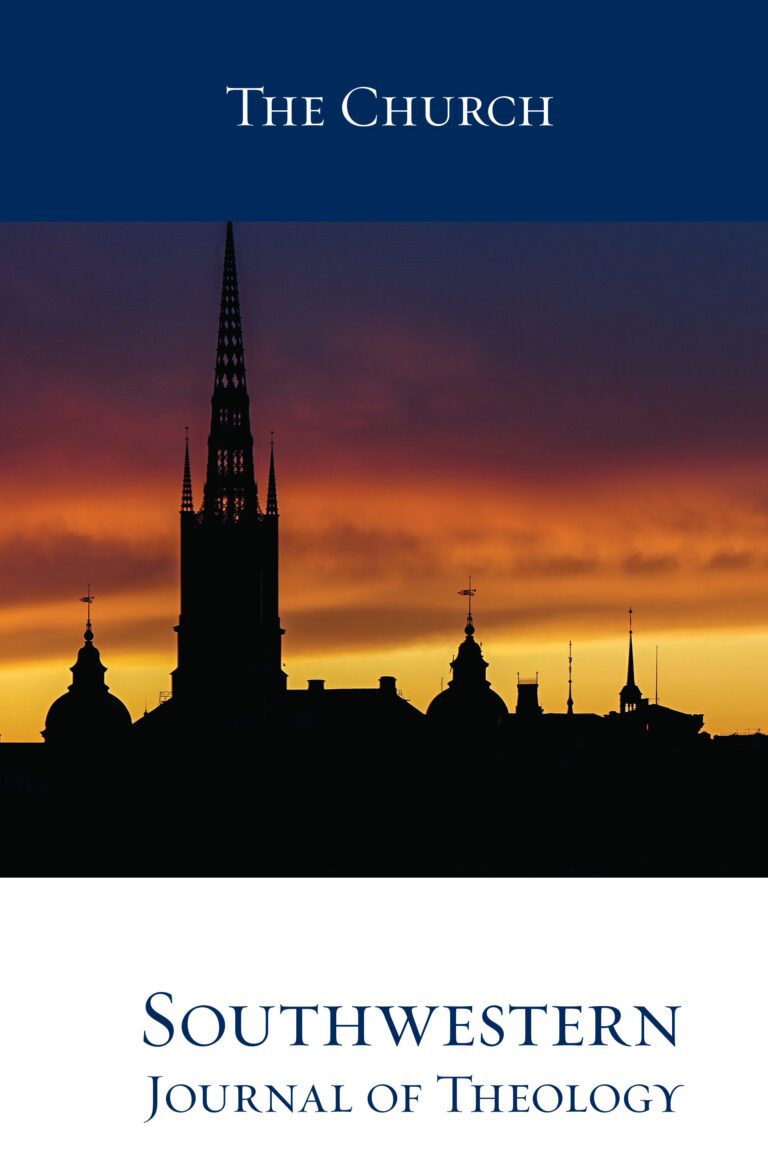
The Church
Southwestern Journal of Theology
Volume 61, No. 1 – Fall 2018
Editor: W. Madison Grace II
By John Mark Terry and Robert L. Gallagher. Grand Rapids: Baker Academic, 2017. 405 pages. Paperback, $29.99.
As the latest addition to the stellar Encountering Mission series, which has been ably edited by Scott Moreau, this work does not disappoint. In the preface, Mark Terry mentioned Latourette’s seven-volume History of the Expansion of Christianity and the difficulty of covering the history of missions in one volume. He then remarked, “Inevitably, students, professors, and reviewers will wonder why we did not include this or exclude that” (vi). This reviewer would have preferred a more detailed treatment of two particularly important missiological issues that will be mentioned later. Also, as researchers in the rapidly developing field of World Christianity uncover more material about key mission figures in the Global South, future history books should provide more examples of such key people. Concerning Global South figures, the book provides a good description of Samuel (Adjayi) Crowther, a Nigerian Anglican priest born in 1807 who “translated the Bible into Yoruba, producing an excellent translation” and opened a mission that prospered (256).
The book is both detailed and accurate. Throughout the book, the tables and sidebars are helpful rather than distracting. The case studies that were placed at the ends of chapters 1, 8–11, and 13–17 will be helpful for generating discussion in small-group situations in classrooms or online forums. For consistency, case studies should have been placed at the ends of the other chapters as well.
Beyond the requisite dates and locations, human interest stories draw the reader’s attention. Examples abound: Martin Luther played the flute (147), the Moravians cast lots (204), and a woman and her husband sued John Wesley for defamation of character (228). Although some people believe that business as mission (BAM) is a recent innovation, other people view Hans Egede, “a colonist and trader for the Danish monarchy in early eighteenth-century Greenland,” as a pioneer of BAM “because of his efforts to join trade with his passion for mission” (192–96).
Because many young Christians are not familiar with Donald McGavran and the Church Growth Movement (CGM), this reviewer was delighted to see an entire chapter devoted to the CGM. Among the interesting facets of the chapter, readers may be intrigued by the influence of the CGM on the Lausanne Covenant (350). In its fair treatment of the CGM, the book listed both “significant accomplishments” and “needed improvements” (349–52).
Because C-5 insider movements have caused a serious division among members of the Evangelical Missiological Society, more space should have been devoted to the movements in the book. Neither side will likely be offended by the summary statement: “Parshall and others have expressed concerns about the more radical approach, fearing that syncretism will be the result” (289). At the very least, explanations of C-1 through C-6 should have been included in this section.
Like insider movements, ancestral rites are a continuing source of controversy among Christians. A chapter devoted to Jesuit missions in various countries includes this description of how Matteo Ricci viewed the rites in China: “Ricci believed that the Chinese burned incense as a gesture of respect, not worship, and that food was given symbolically as a sign of ongoing care for the family member” (164). By quoting Wenhan Jiang, however, the chapter gives a different perspective when Jiang refers to the rites as “ancestor worship” (167). More clarity and details are needed in this section. A summary statement at the end of the chapter expresses ambivalence: “Not all Jesuit missionaries were good missionaries, and often early Catholic missions seem shallow, theologically thin, and sometimes syncretistic, effortlessly melting Catholicism into the local religions. Still, the Jesuit record shows remarkable faithfulness to Christ and flexibility in expression” (169).
The final chapter, “In Retrospect and Prospect,” includes general descriptions of what missionaries did wrong and what they did right during the past centuries. Another section on the remaining work to be done forms an appropriate conclusion. Encountering the History of Missions is a concise, well-written text, and it will be useful in classrooms for many years to come.





